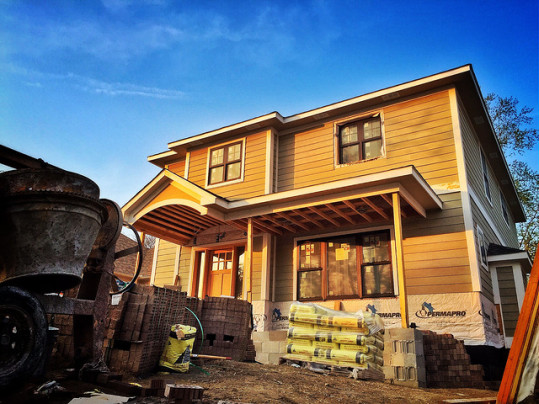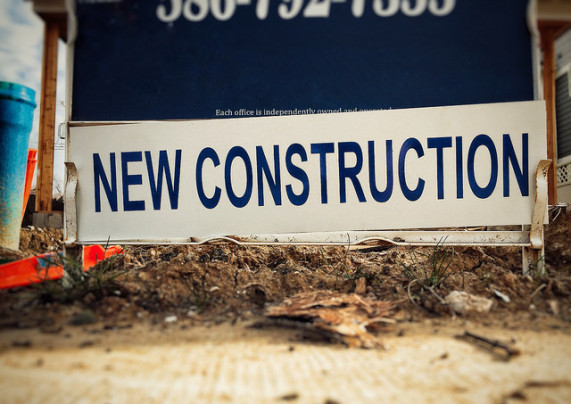Obviously, the number of homes available for sale is important. After all, it has a big impact on affordability. For example, these days there are too few homes for sale in many markets and the resulting inventory crunch has pushed home prices higher. But many recent housing market forecasts say there should be a significant increase in the number of new homes built in 2020. Will it add enough supply to make homes more affordable for buyers? Fannie Mae’s senior vice president and chief economist, Doug Duncan, says there’s good news and bad. “We now expect single-family housing starts and sales of new homes to increase substantially, aided by a large uptick in new construction as builders work to replenish inventories drawn down by the recent surge in new home sales activity,” Duncan said. “Despite the expected increase in the pace of construction, the supply of homes for sale remains tight and strong demand for housing is continuing to drive prices higher, particularly in the more entry-level price tiers.” In other words, though new home construction will add inventory – which will help moderate price increases – inventory will likely remain a challenge, especially for buyers looking for an affordable home. More here.
Archive for December 2019
Mortgage Rates Remain Flat, Just Above Lows
According to the Mortgage Bankers Association’s Weekly Applications Survey, average mortgage rates were flat last week from the week before. There were slight increases to rates for 30-year fixed-rate mortgages with both conforming and jumbo balances and loans backed by the Federal Housing Administration. Rates for 15-year fixed-rate mortgages were unchanged week-over-week. But despite rates remaining just above historic lows, demand for mortgage applications fell from one week earlier. Michael Fratantoni, MBA’s senior vice president and chief economist, said home-buying activity is typically slow at this time of year. “We are in the slowest time of the year for the purchase market,” Fratantoni said. “Purchase application activity declined after the seasonal adjustment, but still remains about 5 percent ahead of last year’s pace. The increase in construction activity will bolster housing inventories, which should be a positive for purchase volumes going into 2020.” Refinance activity also fell last week, though it remains 128 percent higher than last year at the same time. The MBA’s weekly survey has been conducted since 1990 and covers 75 percent of all retail residential mortgage applications. More here.
New Home Sales See Best Three Months Since 2007
As 2019 comes to a close, there are several signs that the housing market will be strong in the year ahead. Among them, new home sales might top the list. For example, according to the most recent numbers from the U.S. Census Bureau and the Department of Housing and Urban Development, sales of newly built single family homes are now nearly 17 percent higher than they were at the same time last year. Additionally, the past three months have been the best three months since 2007. In short, demand for new homes is high and that’s good for the economy, the housing market, and potential home buyers. So what’s driving the increased demand for new homes? Well, a large part of it is mortgage rates. Rates fell in 2019 and helped offset home-price increases, keeping affordability levels manageable. Combined with a strong job market and rising wages, lower borrowing costs motivated more Americans to want to make a move. And, with buying conditions expected to remain fairly stable in 2020, more of the same is expected in the year ahead. More here.
Most Markets More Affordable Than Historic Average
Measuring housing-market affordability typically involves making some comparisons. Of course, with any comparison, what you discover depends on what you’re comparing. Home prices, after all, could be down from where they were last month but up compared to the same time last year. That’s why the best comparison is usually one that takes the broadest and longest view. For ATTOM Data Solutions’ fourth-quarter 2019 U.S. Home Affordability Report, they calculated current affordability levels then compared them to their long-term average. What they found was 53 percent of the 486 counties included in the report were more affordable than their historic average. That includes counties in and around Chicago, Washington D.C., and New York, with areas like Middlesex County (outside Boston), Orange County, (outside Los Angeles), and Bay County (Panama City) showing big gains in the past year. Todd Teta, chief product officer with ATTOM, says mortgage rates and wages are key. “Homes were actually a bit more affordable because of declining mortgage rates combined with rising pay to overcome the continued price run-up,” Teta said. “As long as people are earning more money and shelling out less to pay off home loans, the market should remain strong with prices continuing to rise, at least in the near term.” More here.
Homes Sell Quickly Even As Market Slows Down
New numbers from the National Association of Realtors show sales of previously owned homes down in November from the month before. The decline was mostly in the South and West, as the Northeast and Midwest saw gains month-over-month. But despite slowing from October’s pace, homes are still selling quickly. In fact, 45 percent of the homes sold in November were purchased less than a month after listing. Lawrence Yun, NAR’s chief economist, says low inventory is the primary factor causing unevenness in the market. “Sales will be choppy when inventory levels are low, but the economy is otherwise performing very well with more than 2 million job gains in the past year,” Yun said. Still, too few homes for sale is likely holding sales back. For example, compared to last year, there’s been a 16 percent decline in homes sold below $100,000 and a 4 percent decrease in sales between $100,000 and $250,000. With a significant portion of home buying demand coming from first-time and entry-level buyers looking for affordable options, available inventory is an issue. Fortunately, recent data shows new home construction is on the rise, which should help bring some needed supply to the housing market. More here.
Mortgage Rates Flat Heading Into Holidays
According to the Mortgage Bankers Association’s Weekly Applications Survey, average mortgage rates were mostly flat last week, with rates for 30-year fixed-rate mortgages with conforming loan balances unchanged from the week before. Rates for loans backed by the Federal Housing Administration were also unmoved from the previous week. Despite the fact that rates remain favorable and much lower than they were at the same time last year, demand for mortgages fell 5 percent. Mike Fratantoni, MBA’s senior vice president and chief economist, says falling demand may be due to the approaching holidays. “As we move into the slowest time of the year for home sales, purchase application volume is declining but continues to outperform year-ago levels, when rates were much higher,” Fratantoni said. “2019 was another year of inadequate housing supply in relation to demand. The good news is that the tide could be slowly turning for potential buyers. Housing starts and permits rose strongly in November, and home builder confidence has surged to a level not seen since 1999.” The MBA’s weekly survey has been conducted since 1990 and covers 75 percent of all retail residential mortgage applications. More here.
Home Building Booms As 2019 Comes To A Close
Americans want to buy homes. The job market is strong, mortgage rates are low, and people are ready to make a move. However, though conditions are largely favorable for prospective home buyers, there are some remaining challenges. Among them, low inventory tops the list. In many markets, there are too few homes available for sale. And when there are more buyers than homes, finding a house to buy becomes more difficult. It also pushes prices higher. The quickest solution to this problem is building more homes. And, if new numbers from the U.S. Census Bureau and the Department of Housing and Urban Development are any indication, the year is ending on a high note. That’s because, their most recent residential construction report shows the number of new homes that began construction in November was 13.6 percent higher than at the same time last year. The data also shows that permits to build new homes moved to a 12-1/2 year high. Both are signs that new home construction is ramping up as the year ends. That’s encouraging for next year’s market and anyone hoping to buy a home anytime soon. More here.







